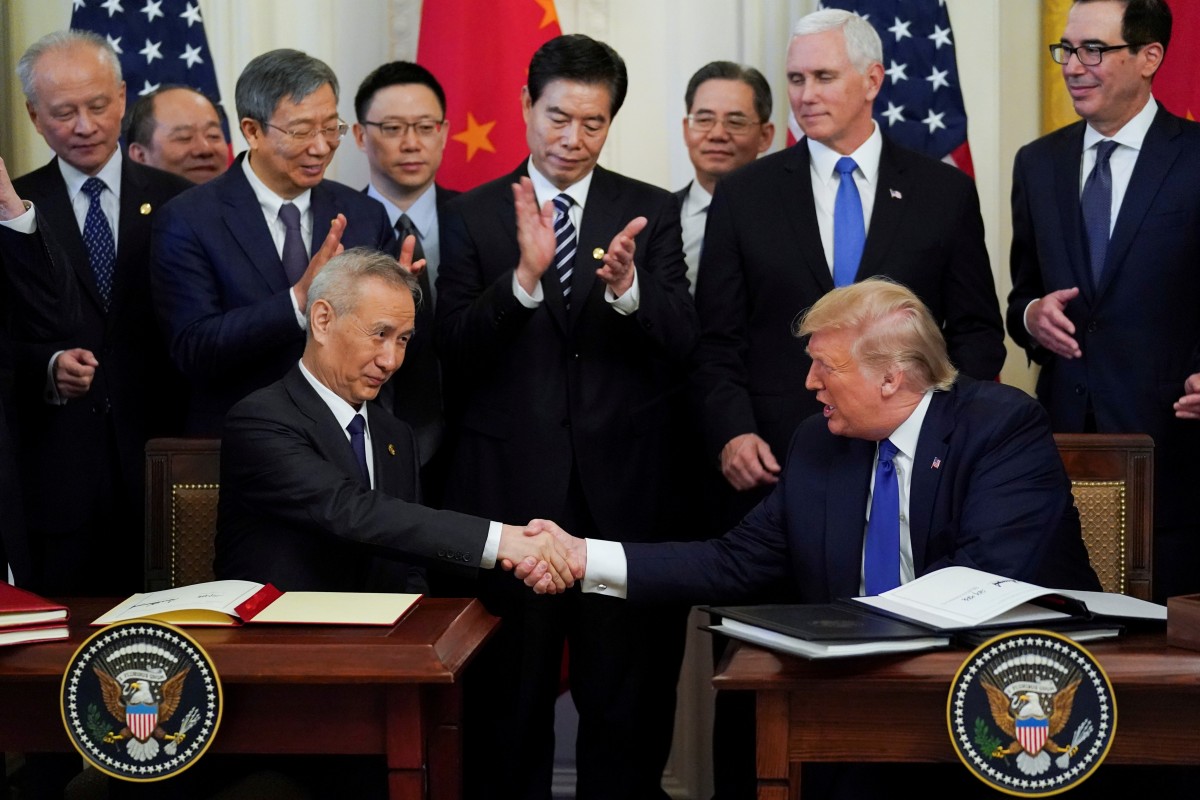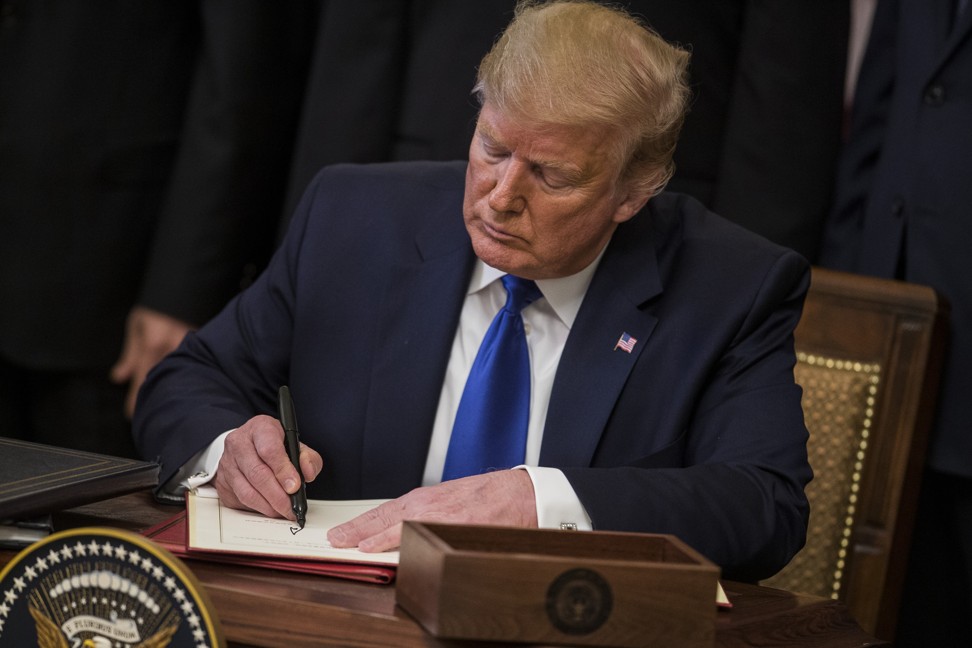
A US-China trade deal that had long been in the works was signed with all the pomp we have come to expect from President Donald Trump, and for some the setting was fitting as this has been billed as a victory for style over substance.
While Trump proclaimed it “a momentous step – one that has never been taken before with China”, it had long been clear that this phase one deal would be lightweight in the grand scheme of trade agreements, which often run to thousands of pages compared to just 86 in this case.
After talks dramatically collapsed in April last year, it was determined that the more difficult elements would be shifted into a second phase of negotiations. The document, then, is seen to contain the low-hanging fruit – items both sides could bear to agree on as their broader geopolitical relationship continues to deteriorate.
As it was signed, the US was continuing to tighten the screw on Chinese technology giant Huawei, successfully lobbying ally Britain to keep the company out of its “critical national infrastructure”. This is just one area with the potential to upend the trade truce over the coming months.
But for now, both sides were keen to spin the story in their own favour. Washington released an English version of the text soon after it was signed in the East Room of the White House by Trump and China’s lead negotiator and Vice-Premier Liu He.
“What the hell. This is a big celebration,” Trump said, as he launched into lengthy introductions of gathered business and political luminaries, including Henry Kissinger.
Beijing tightly controlled the narrative domestically, with the language in state media more muted and a Chinese version only appearing on the Ministry of Finance’s website eight hours after the signing ceremony.
In China, It was spun as “win-win” – a phrase which has popped up continually over a tumultuous year and a half of negotiations and which Liu also used as he spoke at the dais after Trump and US Vice-President Mike Pence.
What the hell. This is a big celebration - Donald Trump
Beijing was eager to assert that it had not capitulated, with state-owned tabloid Global Times writing that it should not be viewed as a “one-sided win”. The official Xinhua News Agency said it showed both sides are looking for “a more reasonable approach” to managing their differences.
As for the contents, there were few surprises. As reported, China will buy an additional US$200 billion of US goods and services over two years, which will “require US exports to China to grow 40 per cent in 2020 and an additional 40 per cent in 2021 – implausibly large increases”, said David Dollar, senior fellow covering China at the Brookings Institution.
Other provisions include an intellectual property (IP) chapter which was “surprisingly comprehensive”, said Bryan Mercurio, a law professor specialising in IP at the Chinese University of Hong Kong, who added that it “has a mix of commitments and demonstrable results”, and a currency chapter that was dismissed by Brad Setser at the Council on Foreign Relations as “a reiteration of China’s [International Monetary Fund] and existing G20 commitments”.
The US cancelled a tariff planned for December on Chinese-made consumer goods, and will halve a 15 per cent tariff on US$110 billion worth of products as of February 14.
However, rafts of tariffs remain in place. The average US tariff on Chinese products will be 19 per cent after the deal is implemented, compared to 3 per cent before the trade war, research by the Peterson Institute for International Economics showed.
An enforcement mechanism means the US can unilaterally resurrect the tariffs should it deem that China has not upheld its side of the bargain.
Phase two is more difficult because it is about more so-called structural reform, related to China’s political and social system. - Yiwei Wang, Renmin University
American markets rallied, despite the fact that the signing had been diarised for weeks, with all three major benchmarks reaching record intraday highs. The Dow and S&P 500 closed at record highs, while Hong Kong’s Hang Seng Index closed higher for the first time in three days.
Chinese markets, on the other hand, retreated for a third day, as traders looked past the tentative truce to focus on lingering issues that could still fray the relationship between Beijing and Washington.
This tense outlook means that expectations are low for a phase two deal. Trump said negotiations would begin immediately, but Liu said he did not “think it is a wise choice to impatiently launch new stages of talks” – another sign of how the differently each camp views this deal.

“Phase two is more difficult because it is about more so-called structural reform, related to China’s political and social system. The early stage is easy to reach, because it’s about trade issues,” said Yiwei Wang, a professor at Renmin University.
For China, a ceasefire with the US may lead to skirmishes elsewhere, as switching its imports to the US, it risks angering its other trading partners, with the initial reaction suggesting this is the case.
The purchase element of the deal represents “managed trade, meaning the US tells China” what to buy, leaving European firms to “wonder where our place is”, Joerg Wuttke, president of the EU Chamber of Commerce in China, told a press conference in Beijing on Thursday.
Additional reporting by Simone McCarthy and Wendy Wu.
for our 50% early bird offer from SCMP Research: China AI Report. The all new SCMP China AI Report gives you exclusive first-hand insights and analysis into the latest industry developments, and actionable and objective intelligence about China AI that you should be equipped with.







